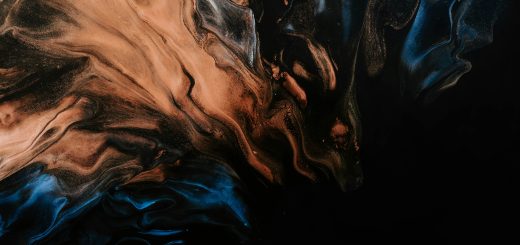Why Do Some Animals Change Color?

Looking for more amazing products? Check out our online store and explore our collection here! Happy shopping!
Before diving in, please note: This post is for informational purposes only. If you’d like to know more about how we approach topics, feel free to check out our friendly Disclaimer Page.
Hey there, amazing readers! 
We’re committed to delivering quality posts, and your support (even just sticking around despite the ads) means everything to us. So, bear with us, and thanks for helping us keep the good vibes rolling. Now, on to the fun stuff!
TRANSLATE BUTTON AT THE END OF THE ARTICLE
A Quick Overview
Color change in animals is a captivating phenomenon that never fails to intrigue us.
From the vibrant hues of tropical fish to the subtle tones of a chameleon, nature has a remarkable way of using color for various purposes.
But have you ever wondered why some animals possess this fascinating ability?
In this article, we’ll dive deep into the reasons behind color change in the animal kingdom, exploring survival, communication, and even regulation of body temperature.
The Fascinating World of Color-Changing Animals
When you think about animals that change color, chameleons likely spring to mind first.
But hold on!
They aren’t the only ones.
Many species, including octopuses, cuttlefish, and certain frogs, have this remarkable skill.
Imagine standing on the shore and watching a cuttlefish blend seamlessly with its surroundings, or spotting a frog that changes from a vibrant green to a dull brown.
These color-changers are more common in nature than you might think!
Color change isn’t just for show.
It’s an evolutionary trait, helping these animals survive in the wild.
In a world full of predators, the ability to alter one’s appearance can be a game-changer.
Whether it’s for hiding, signaling to others, or adjusting to environmental conditions, color change is a life-sustaining skill.
It’s fascinating how evolution equips animals with the tools they need to thrive.
Color-changing capabilities can also be a sign of good health in some species, making them more appealing to potential mates.
So, the next time you see a color-changing animal, remember it’s not just a pretty sight; it’s a complex survival mechanism at work!
Understanding Color Change: A Quick Overview
Animals can change color using several mechanisms.
The most common ones involve pigment cells, called chromatophores, and structural coloration.
Each method works differently and serves various purposes.
Chromatophores: These are specialized cells containing different pigments, such as melanin.
When these cells expand or contract, they can change the color of the animal’s skin.
For instance, a chameleon can reveal bright colors or blend into its environment by manipulating these cells.
Iridophores and leucophores: These cells reflect light and create iridescent colors.
Cuttlefish, for example, have these cells that allow them to display vibrant blues, greens, and even metallic hues.
Hormonal influence: Hormones can trigger color change during times of stress or excitement.
This can be seen in some species of frogs during mating season when males display bright colors to attract females.
Discover "Dog Care: Learning How to Care for Your Furry Friend
"
Each of these methods showcases the diversity of nature and how different species have adapted their color-changing abilities to meet specific needs.
Isn’t it mind-boggling?
How Does Color Change Benefit Survival?
The ability to change color is a powerful survival strategy for many animals.
It serves multiple functions, including:
Camouflage: Blending into the environment makes it harder for predators to spot them.
This is particularly vital for animals like the cuttlefish, which can mimic the seafloor.
Warning colors: Some animals, such as poison dart frogs, use bright colors to signal danger to potential predators.
These colors attract attention and convey a message: "Stay away!"
Distraction: Color change can also confuse predators, allowing the animal a chance to escape.
For example, some octopuses can create a sudden flash of color, disorienting their attacker.
Temperature regulation: Animals can change color based on the temperature.
Dark colors absorb more heat, while lighter shades reflect it.
This ability can help them maintain an optimal body temperature.
Ultimately, color change is a multifaceted tool that contributes to an animal’s survival in ways that can seem almost magical.
Camouflage: Hiding in Plain Sight
Camouflage is perhaps the most well-known reason for color change.
It’s all about blending in to avoid being seen.
Imagine walking through a forest and spotting a stick insect hanging on a branch.
Its color and texture mimic twigs and branches, making it nearly invisible to both prey and predators.
In the ocean, cuttlefish are the masters of disguise.
They can change their skin color and texture to match rocks, sand, or coral.
This ability allows them to ambush prey or avoid becoming someone else’s lunch.
Researchers have studied these creatures and are fascinated by how they achieve this level of adaptation.
It’s not just about changing color; it’s also about changing skin texture to enhance their camouflage.
Examples of camouflage:
- The leafy sea dragon uses its leaf-like appendages to blend into seaweed.
The horned lizard can flatten its body and change color to resemble the dirt around it.
Camouflage is a brilliant example of nature’s ingenuity.
It showcases how animals adapt to their environments for survival in ways we might never have imagined.
Communication: Color as a Social Signal
While hiding can be a life-or-death scenario, color change can also serve as a form of social communication among animals.
Male frogs, for instance, often change color during mating season.
This vibrant display is designed to attract females and assert dominance over other males.
Examples of social signaling:
- Male chameleons will show bright colors to intimidate rivals or attract mates.
Certain species of birds exhibit color changes in their plumage during mating rituals.
This kind of communication through color can be crucial for species survival.
By signaling to each other effectively, they strengthen social bonds and ensure reproductive success.
It’s like having a colorful language that everyone can see!
Temperature Regulation: Staying Cool or Warm
Color change isn’t solely about camouflage or communication; it can also help animals manage their body temperature.
Darker colors absorb heat, while lighter colors reflect it.
Some animals use this trait to adapt to their environment.
For example, a lizard basking in the sun may become darker to absorb more heat when it’s cold.
Once it’s warmed up, it might change to a lighter shade to avoid overheating.
Practical examples:
- Some species of anoles can change color to manage their body temperature depending on sunlight exposure.
Certain frogs exhibit color changes based on temperature fluctuations and humidity levels.
This subtle adjustment can be the difference between thriving and barely surviving in challenging environments.
It’s one of those ingenious features that make the animal kingdom so fascinating.
Seasonal Changes: Nature’s Color Palette
Just as the leaves change colors in autumn, some animals also shift their hues with the seasons.
This change can often coincide with factors like breeding cycles or environmental conditions.
A classic example is the Arctic hare.
In summer, its coat is a brownish color to blend with the landscape.
However, when winter arrives, it transforms into a snowy white to camouflage against the ice and snow.
This seasonal adaptation helps animals:
Evade predators: By matching their appearance with their changing environment.
Facilitate breeding: Bright colors during mating seasons can attract potential mates.
It’s a remarkable strategy that highlights nature’s rhythm and helps ensure species survival across changing climates.
The Role of Hormones in Color Transformation
Hormones play a significant role in the color-changing capabilities of certain animals.
Various hormones trigger color change in response to environmental stimuli, stress, or social interactions.
For instance, in some fish, the release of hormones can lead to rapid color changes during aggressive encounters or courtship displays.
Key points:
- Stress hormones can cause rapid changes in color as a survival mechanism.
Breeding hormones often influence males to display brighter colors to attract females.
Through this hormonal dance, animals communicate their emotional state, catch the attention of potential mates, and even ward off competitors.
It’s fascinating to think about how our emotions might be reflected in our appearance, just like many animals!
Chameleons: Masters of Color Change Techniques
Chameleons are perhaps the most iconic animals known for their color-changing abilities.
Their mastery of color change is due to a complex interaction between their skin cells and external factors.
How they change color:
- Chameleons utilize chromatophores, iridophores, and leucophores to manipulate their skin’s appearance.
Their ability to perceive color gives them the capacity to adjust based on their surroundings and their mood.
These spectacular creatures can switch colors in a matter of seconds.
Whether they’re trying to impress a mate or hide from a predator, chameleons are living testaments to the wonders of evolutionary adaptation.
Cuttlefish Creativity: The Art of Disappearing
Cuttlefish are like the Picasso of the sea.
They boast an incredible ability to change not just color, but also texture.
When threatened or hunting, they can display a myriad of colors and patterns that help them either blend into their environment or become strikingly bright to intimidate.
Unique features:
- They can mimic the appearance of their surroundings with incredible precision.
Their skin adjusts to reflect light, creating an almost holographic effect.
This talent for disguise and display makes cuttlefish one of the most marvelous examples of color change in the animal kingdom.
Watching them in action is like witnessing a performance art show underwater.
Frogs and Lizards: Nature’s Colorful Adaptations
Frogs and lizards also exhibit fascinating color-changing abilities.
For instance, many species of frogs can shift their colors based on mood, temperature, and even humidity.
Some lizards, like the anole, can change colors to blend in with their surroundings.
Features:
- Frogs use color change to communicate during mating seasons.
Some lizards display bright colors as a warning to potential predators.
These adaptations serve various purposes, from attracting mates to avoiding predators.
It’s like they have their own little world full of secrets and signals that we are only beginning to understand.
Conclusion: The Wonder of Color in the Animal Kingdom
The ability of animals to change color is a testament to the wonders of evolution.
Whether it’s for camouflage, communication, temperature regulation, or seasonal adaptation, color change plays a vital role in the survival of countless species.
As we continue to explore our natural world, we uncover more about these extraordinary mechanisms.
So, the next time you see a chameleon change its color or a cuttlefish blending into the ocean floor, remember the fascinating reasons behind these transformations.
Nature is full of surprises, and the colorful adaptations of animals are just one exciting chapter in its ongoing story.

The Enlightenment Journey is a remarkable collection of writings authored by a distinguished group of experts in the fields of spirituality, new age, and esoteric knowledge.
This anthology features a diverse assembly of well-experienced authors who bring their profound insights and credible perspectives to the forefront.
Each contributor possesses a wealth of knowledge and wisdom, making them authorities in their respective domains.
Together, they offer readers a transformative journey into the realms of spiritual growth, self-discovery, and esoteric enlightenment.
The Enlightenment Journey is a testament to the collective expertise of these luminaries, providing readers with a rich tapestry of ideas and information to illuminate their spiritual path.
Our Diverse Expertise
While our primary focus is on spirituality and esotericism, we are equally passionate about exploring a wide range of other topics and niches 

To ensure we provide the most accurate and valuable insights, we collaborate with trusted experts in their respective domains 
Our blog originally focused on spirituality and metaphysics, but we’ve since expanded to cover a wide range of niches. Don’t worry—we continue to publish a lot of articles on spirituality! Frequently visit our blog to explore our diverse content and stay tuned for more insightful reads.
Hey there, amazing reader! 
Check out our store here and take a peek at some of our featured products below! Thanks for being awesome!











